Dysport Or Botox: Which Lasts Longer?
The typical duration of effect is about 3 months with the usual sterile saline dilution. More units injected may increase the duration a short term (days to a week or so).
By adding lidocaine with epinephrine and bicarbonate extends the duration for ten days and dysport 13 days.
This technique would extend the timing before reinfection and thus save some money over the year with less repeat injections necessary.
I presented this study at the last two cosmetic surgery conferences, which took over three years to complete.
A zinc supplement with an enzyme (Zytase), has been shown to increase the effectiveness and extend the botox effect in patients who’s duration of effect has been shortened over time. This shortened effect is out likely due to an antibody attacking the foreign protein in your body. (Robert J. Troell, MD, FACS, Las Vegas Facial Plastic Surgeon)
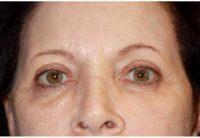
57 Year Old Woman Treated With Botox With Doctor Leonard Miller, MD, Brookline Plastic Surgeon
Botox vs Dysport
Noted in our practice that Dysport seem to last bit longer in half of our patients. Most receive 2 treatment annually with Dysport and 3 with Botox. (Susan F. Lin, MD, San Mateo OB-GYN)
For the typical patient, Botox and Dysport – the two most common neuromodulators in use, will last 3 to 4 months.
The duration of effect is determined by the nerves ability to generate new pods of its transmitter to communicate with the muscle once again.
As we age, our regenerative ability may slow resulting in a longer duration. I have many patients who come in twice per year but most patients are seen 3 to 4 times per year. (Richard E. Moore, MD, Saint Louis Physician)
Botox generally lasts about 3-4 months. There are two variables that we find effect the amount of time that Botox lasts. Botox usually lasts longer in those that use it consistently. If there are big breaks like 8-12 months between procedures, duration is generally less.

Allergan Botox 100 Iu
Consistent use at 3-4 month intervals means a very consistent appearance throughout.
The amount of animation (movement) in each patient is somewhat different and those that have very strong facial musculature and more natural movement will generally have less duration.
On another note, we are having some luck with Dysport, the new alternative to Botox but are not ready to say yet whether duration is longer than with Botox (as of November 2016). (Harold J. Kaplan, MD, Los Angeles Facial Plastic Surgeon)
Botox and Dysport both last about 3 months, although fillers last 6
Botox and Dysport temporarily relax muscles that cause wrinkles, usually for about 3 months. Dysport tends to kick in a little faster, but they have the same duration. Fillers like Restylane, Juvederm, or Radiesse cost a bit more, but usually last for 6 to 12 months.

Botox Forehead Injections For Men
All the treatments tend to have a cumulative effect, the more you do them, the longer the results tend to last. For more information on dermafillers, please click the link below. Learn more:. (David C. Mabrie, MD, Bay Area Facial Plastic Surgeon)
Botox is a treatment composed of a neurotoxin that is produced by the bacterium Clostridium botulinum. Medically, this drug is referred to as botulinum toxin and has proven an effective way to combat wrinkles and other signs of aging that appear on our faces.
Botox as well as Dysport, typically lasts 3 – 4 months. Results may vary from patient to patient depending on the frequency of injections. Patients that maintain their results by receiving their injections every two and a half months may experience longer lasting results long term.
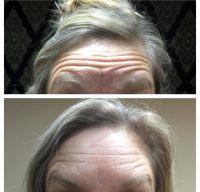
Botox Remove Forehead Lines
Consult with a board certified surgeon to evaluate your muscle activity and determine how many units you require. (Omar Fouda Neel, MD, FRCSC, FACS, Montreal Plastic Surgeon)
The results from Botox will vary from patient to patient. Many factors may affect how much the results will last such as: amount of units injected, accuracy of the injections into the target muscles, reconstitution technique, storage, etc.
In average, Botox can last between 3-4 months. The more you use it, the longer it lasts because your muscles “forget” how to contract. Another neuromodulator that is commonly used is Dysport. There is some research suggesting that it will act faster and last longer.
In my experience this may be true in some patients, but not in all of them. (Jose Rodríguez-Feliz, MD, Miami Plastic Surgeon)
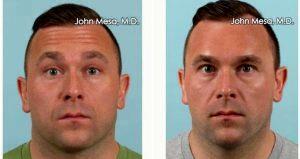
Doctor John Mesa, MD, New York Plastic Surgeon – 31 Year Old Man Treated With Botox For Forehead Lines
Usually 3-4 months but some patients see effects as long as 6 months. Remember, these are averages and so the onset and duration may be shorter or longer for you.
Also, the various forms of Botulinum toxin (e.g. Botox, Dysport, Xeomin) are slightly different chemical preparations and, though not proven, may work better or last longer for you than in someone else. (Anand D. Patel, MD, Brookfield Facial Plastic Surgeon)
Botox may last between 2 and 4 months on average–or more or less.
If your Botox lasts 2 months or less, repeatedly (not just one time), it may be worth considering a trial of Dysport, which can tend to last a bit longer in a given individual. On average, Botox tends to last 3 months, but may commonly last a few extra weeks.
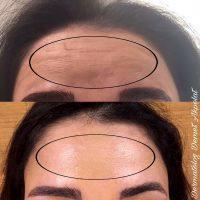
Dysport For Forehead Lines Before And After
In rare individuals, it may last 5 to 6 months from the start, but this is unlikely. What does happen, though, over time, with most, is that regular use of Botox and Dysport WITHOUT LETTING IT WEAR OFF IN BETWEEN does weaken the muscles over time, and the intervals between treatments increase while the amounts necessary to achieve the same results may decrease.
For this reason, to get the most out of Botox and Dysport, it is worth keeping up with the treatments regularly. That said, if you decide the treatments are no longer for you, have no fear.
Nothing bad will happen from just stopping–internet myths to the contrary. (Jessica J. Krant, MD, MPH, New York Dermatologic Surgeon)
The effects of botox last 3 to 6 months
Although some patients feel the effect is immediate, it really takes a good 1 – 2 weeks to see the full effect of botox or xeomin or dysport. That effect will then last 3 – 6 months. Some patients return every 3 months because they don’t want to see any movement return or because they rely on the brow lift they get from the treatment.
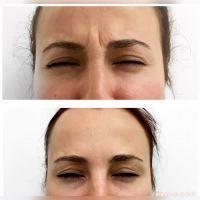
Dysport For Frown Lines Before And After Pic
Others come in once a year because they use it more to help train their muscles and expressions to keep the lines from getting worse. Most of my patients return at about 4-5 months to keep their appearance fresh and natural and combine the visit with a touch up of their filler as needed.
In terms of why it might last longer in one patient or another or after one visit or another, there are many variables. Having a more complete treatment — one where the muscle movement is more fully relaxed, may make the treatment last longer.
However, aesthetically that might not give you the look you want. Once you have that complete effect on a given muscle, adding more toxin will not give you longer results. Each vial has slight differences within the range allowed by the FDA so there can be small differences in the amount of toxin despite your physician’s office diluting it the same way as always.
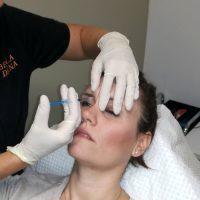
Dysport Injections
Everyone’s metabolism and muscle movement is different. Some patients respond better to one brand than another (although controlled studies don’t show a statistically significant difference).
Finally, if you are measuring the length of action based on the look achieved, doing filler to support the skin or fill lines at the same time as botulinum toxin will certainly prolong your look longer. (Heidi A. Waldorf, MD, New York Dermatologist)
How long does Botox Last….Studies tell us
Currently, I am nearly finished the largest research study ever completed assessing the duration of Botox and how this compares to two other similar products, Dysport and Xeomin.
When I assessed all major studies looking at Botox, we found that 75% of people have a very good effect at 1 month. At three months, this drops to 50% of people having an excellent effect. At 4 months, 28% of people will still have an excellent effect while at 5 months 17% of people will still have this effect.
So you can see, there is a great chance that Botox will have a 50:50 chance of still having an “excellent” result at 3 months. Most people will tell you it lasts three months, but this is NOT true if looked at objectively and honestly.
This doesn’t mean that it is still not working, it likely is but it is having a less obvious effect by this point. However, we are now learning that people who use these medications regularly often get a longer duration of action the longer they use it.
Many people see effects for 4-5 months. (James Bonaparte, MD, MSc, FRCSC, Ottawa Facial Plastic Surgeon)
On average, Botox tends to last 3-4 months. For some people it can last even up to 6 months. The greater the units injected, the longer the Botox tends to last. Injection technique is equally important.
Directly injecting Botox into the target muscle will result in a longer duration of effect. Thus, your injector should have a thorough understanding of facial musculature. If your Botox treatments are not lasting 3 months, you may need additional units of Botox or you may consider trying other neuromodulators such as Dysport or Xeomin.
Prior to any intervention, a proper physical exam is necessary. (Sahar Nadimi, MD, Chicago Facial Plastic Surgeon)
On average BOTOX and Dysport effects last 3 months as the muscles gradually resume their function. There is some variability in patients that is inherent to their metabolism of the product and of course the number of units injected as well as muscle mass and motion also play a role.
Some patients do not wait for complete return of muscle function as they like to avoid extreme changes in their look and repeat their treatments earlier. Over time occasional individuals are able to have longer lasting results as the muscles repeatedly weaken and require less paralysis. (Pedy Ganchi, MD, Ridgewood Plastic Surgeon)